A Novel Chip-Level Blockchain Security Solution for the Internet of Things Networks
Abstract
1. Introduction
2. Brief Review of Blockchain
2.1. Transaction
2.2. Generation of Blockchain
2.3. The Length of Blockchain and the Strrength of Anti-Tampering
2.4. Limitation of Blockchain Protection
3. Blockchained IoT (BIoT)
3.1. On a Chip-Level Countermeasure
3.1.1. Existing Solutions
RNG
PUF
3.1.2. Cyber-physical Chip Identification
3.1.3. Experiment
3.2. Implementation of Cyber-Phsyical Chip Identification to Blockchain
4. Discussion
5. Conclusions
6. Patents
Author Contributions
Funding
Acknowledgments
Conflicts of Interest
References
- Butt, V. How many risks are there in billions of connected devices, Zurich Insurance Group News. Available online: https://www.zurich.com/en/knowledge/articles/2015/04/how-many-risks-are-there-in-billions-of-connected-devices (accessed on 19 April 2015).
- Majithia, K. Ericsson appears to backtrack on 50B connected device vision, MOBILE WORLD LIVE. Available online: https://www.mobileworldlive.com/featured-content/top-three/ericsson-backtracks-2020-vision-connected-devices/ (accessed on 3 June 2015).
- Roman, R.; Najera, P.; Lopez, J. Securing the internet of things. IEEE Comput. 2011, 44, 51–58. [Google Scholar] [CrossRef]
- Ning, H.; Liu, H.; Yang, L.T. Cyberentity security in the internet of things. IEEE Comput. 2013, 46, 46–53. [Google Scholar] [CrossRef]
- Granjal, J.; Monterio, E.; Silva, J.S. Security for the internet of things: A survey of existing protocols and open research issues. IEEE Comm. Tutor. 2015, 17, 1294–1312. [Google Scholar] [CrossRef]
- Nurse, J.R.C.; Creese, S.; Roure, D.D. Security risk assessment in internet of things systems. IEEE IT Pro. 2017, 19, 20–26. [Google Scholar] [CrossRef]
- Lee, J.-H.; Kim, H. Security and privacy challenges in the internet of things. IEEE Consum. Electron. Mag. 2017, 6, 134–136. [Google Scholar] [CrossRef]
- Kim, H.; Lee, E.A. Authentication and authorization for the internet of things. IEEE IT Pro. 2017, 19, 27–33. [Google Scholar] [CrossRef]
- Yang, Y.; Wu, L.; Yin, G.; Li, L.; Zhao, H. A survey on security and privacy issues in internet-of-things. IEEE Internet Things J. 2017, 4, 1250–1258. [Google Scholar] [CrossRef]
- Lin, J.; Yu, W.; Zhang, N.; Yang, X.; Zhang, H.; Zhao, W. A survey on internet of things: Architecture, enabling technologies, security and privacy, and applications. IEEE Internet Things J. 2017, 4, 1125–1142. [Google Scholar] [CrossRef]
- Asano, T.; Maeda, Y.; Nakagawa, G.; Arima, Y. Physical random-number generator using Schottky MOSFET. Jpn. J. Appl. Phys. 2003, 52, 403–409. [Google Scholar]
- Zhou, S.-H.; Zhang, W.; Wu, N.-J. An ultra-low power CMOS random number generator. Solid State Electron. 2008, 52, 233–238. [Google Scholar] [CrossRef]
- Pareschi, F.; Setti, G.; Rovatti, R. Implementation and testing of high-speed CMOS true random number generators based on chaotic systems. IEEE Trans. Elec. Dev. 2010, 57, 3124–3137. [Google Scholar] [CrossRef]
- Kharraz, A.; Rbertson, W.; Kirda, E. Protecting against Ransomware. IEEE Secur. Priv. 2018, 16, 103–107. [Google Scholar] [CrossRef]
- The New York Times. Facebook Security Breach Exposes Accounts of 50 Million Users. Available online: https://www.nytimes.com/2018/09/28/technology/facebook-hack-data-breach.html (accessed on 28 September 2018).
- Padhy, R.P.; Patra, R.R.; Satapathy, S.C. Cloud computing security issues and research challenges. Int. J. Comput. Sci. Inf. Technol. Secur. 2011, 1, 136–146. [Google Scholar]
- Chistidis, K.; Devetsikiotis, M. Blockchains and smart contracts for the internet of things. IEEE Access 2016, 4, 2292–2303. [Google Scholar] [CrossRef]
- Sharma, P.K.; Singh, S.; Jeong, Y.-S.; Park, J.H. DistBlockNet: A distributed blockchains-based secure SDN architecture for IoT network. IEEE Commun. Mag. 2017, 55, 78–85. [Google Scholar] [CrossRef]
- Kshetri, N. Can blockchain strengthen the internet of things? IEEE IT Pro. 2017, 19, 68–72. [Google Scholar] [CrossRef]
- Miller, D. Blockchain and the internet of things in the industrial sector. IEEE Prof. 2018, 20, 15–18. [Google Scholar] [CrossRef]
- Novo, O. Blockchain meets IoT: An architecture for scalable access management in IoT. IEEE Internet Things J. 2018, 5, 1184–1195. [Google Scholar] [CrossRef]
- Dori, A.; Kanhere, S.S.; Jurdak, R. Towards an optimized blockchain for IoT. In Proceedings of the ACM 2017 IEEE/ACM Second International Conference on Internet-of-Things Design and Implementation (IoTDI), Pittsburgh, PA, USA, 18–21 April 2017. [Google Scholar] [CrossRef]
- Mandrita, B.; Lee, J.; Choo, K.-K.-R. A blockchain future for internet of things security: A position paper. Dig. Commun. Netw. 2018, 4, 149–160. [Google Scholar]
- Kouicem, D.E.; Bouabdallah, A.; Lakhlef, H. Internet of things security: A top-down survey. Comput. Netw. 2018, 141, 199–221. [Google Scholar] [CrossRef]
- Dorri, A.; Kanhere, S.; Jurdak, R.; Gauravaram, P. Blockchain for IoT Security and Privacy: The Case Study of a Smart Home. In Proceedings of the 2ND IEEE PERCOPM Workshop on Security Privacy and Trust in the Internet of Things 2017, Kona, HI, USA, 13–17 March 2017. [Google Scholar] [CrossRef]
- Petracek, N. Is Blockchain The Way to Save IoT? Forbes Community Voice, Forbes Technology Council, 18 July 2018. [Google Scholar]
- Bauer, H.; Burkacky, O.; Knochenhauer, C. Security in the Internet of Things; Semiconductor, McKinsey & Company: New York, NY, USA, 2017. [Google Scholar]
- Watanabe, H. Can Blockchain Protect Internet-of-Things? In Proceedings of the Future Technology Conference 2017 (FTC2017), Vancouver, Canada, 29–30 November 2017.
- Watanabe, H. Blockchain technology in SSD controller—Flash in IoT security. In Proceedings of the Flash Memory Summit 2017 (FMS2017), Santa Clara, CA, USA, 8–10 August 2017. [Google Scholar]
- Watanabe, H. Blockchain & IoT. In Proceedings of the Hack PWN, the China Internet Security Conference 2017 (ISC 2017), Beijing, China, 14 September 2017. [Google Scholar]
- Watanabe, H.; Hamamoto, T. The cheapest physical CPCID fully compatible to mass-product DRAM process. In Proceedings of the 2017 Asia-Pacific Workshop on fundamental and applications of advanced semiconductor devices (AWAD2017), Gyeongju, Korea, 3–5 July 2017. [Google Scholar]
- Nakamoto, S. Bitcoin: A Peer-To-Peer Electronic Cash System. Available online: https://bitcoin.org/bitcoin.pdf; https://nakamotoinstitute.org (accessed on 31 October 2008).
- Belinkyh, M.; Rennick, E.; Veitch, A. Santander. The Fintech 2.0 Paper: Rebooting financial services, InnoVentures. Available online: http://santanderinnoventures.com/fintech2/ (accessed on 6 March 2015).
- Merkle, R.C. A digital signature based on a conventional encryption function. In Proceedings of the Conference on the Theory and Applications of Cryptographic Techniques on Advances in Cryptology (CRYPTO ’87), Santa Barbara, CA, USA, 16–20 August 1987; pp. 369–378. [Google Scholar]
- Lee, J.W.; Lim, D.; Gassend, B.; Suh, G.E.; van Dijk, M.; Devadas, S. A technique to build a secret key in integrated circuits for identification and authentication applications. In Proceedings of the 2004 Symposium VLSI Circuits, Digest of Technical Papers, Honolulu, HI, USA, 15–19 June 2004; pp. 176–179. [Google Scholar]
- Suh, G.E.; Devadas, S. Physical unclonable functions for device authentication and secret key generation. In Proceedings of the Design Automation Conference (DAC 2007), San Diego, CA, USA, 4–8 June 2007. [Google Scholar]
- Yu, M.D.; Sowell, R.; Sing, A.; M’Raihi, D.; Devadas, S. Performance metrics and empirical results of a PUF cryptographic key generations ASIC. In Proceedings of the 2012 IEEE International Symposium on Hardware-Oriented Security and Trust, San Francisco, CA, USA, 3–4 June 2012. [Google Scholar]
- Tehranipoor, F.; Karimian, N.; Xiao, K.; Chandy, J. DRAM based intrinsic physical unclonable functions for system level security and authentication. IEEE T VLSI Syst. 2017, 25, 1085–1097. [Google Scholar] [CrossRef]
- Diffie, W.; Hellman, M.E. New directions in cryptography. IEEE Trans. Inf. Theory 1976, IT-22, 644654. [Google Scholar] [CrossRef]
- Accelerate towards autonomous driving. In Proceedings of the SK Hynix automotive symposium, Santa Clara, CA, USA, 7 August 2017.
- Yamamoto, M.; Ochiai, T.; Takenaka, M.; Sakiyama, K.; Ito, K.; Iwamoto, M.; Ota, K. Temperature Sensor, Encryptor, Encryption Method, and the Individual-Specific Information Generating Device. JP5857726B2, 20 December 2011. (In Japanese). [Google Scholar]
- Yamamoto, M.; Ochiai, T.; Takenaka, M.; Ito, K.; Sakiyama, K.; Iwamoto, M.; Ota, K. Temperature Sensor, Encryption Device, Encryption Method and Individual Information Generation Device. JP5870675B2, 20 December 2011. (In Japanese). [Google Scholar]
- Rivest, R.L.; Shamir, A.; Adelman, L.M. A Method for Obtaining Digital Signature and Public-Key Cryptsystems, MIT-LCS-TM-082; MIT Laboratory for Computer Science: Cambridge, MA, USA, 1977. [Google Scholar]
- Elgamal, T. A public-key cryptosystem and a signature scheme based on discrete logarithms. IEEE Trans. Inf. Theory 1985, IT-31, 469–472. [Google Scholar] [CrossRef]
- Kravitz, D.W.; Mills, O. Digital Signature Algorithm. U.S. Patent 5,231,668, 26 July 1991. [Google Scholar]
- Schnorr, C.P. Method for Identifying Subscribers and for Generating and Verifying Electronic Signatures in a Data Exchange System. U.S. Patent 4,995,082, 23 February 1990. [Google Scholar]
- Kleinjung, T.; Aoki, K.; Franke, J.; Lenstra1, A.K.; Thomé, E.; Bos, J.W.; Gaudry, P.; Kruppa, A.; Montgomery, P.L.; Osvik, D.A.; et al. Factrozation of a 768-bit RSA modulus version 1.3, 24 January 2010. In Proceedings of the Advances in cryptology—CRYPTO 2010, 30th Annual Cryptology Conference, Santa Barbara, CA, USA, 15–19 August 2010. [Google Scholar]
- Hayashi, T.; Shimoyama, T.; Shinohara, N.; Takagi, T. Breaking pairing-based cryptosystems using ηT pairing over GF (397). In Proceedings of the ASIACRYPT 2012, Beijing, China, 2–6 December 2012. [Google Scholar]
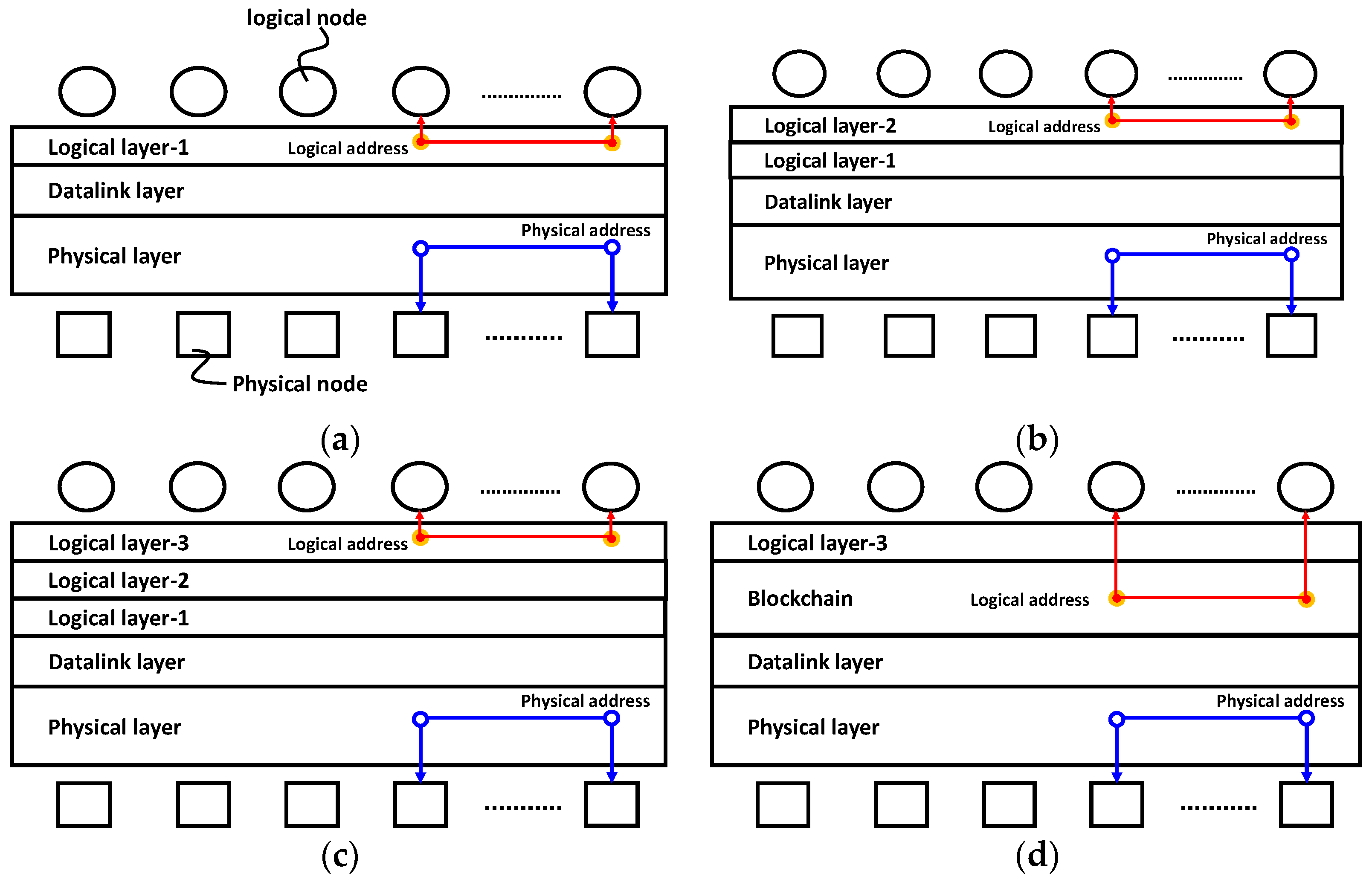
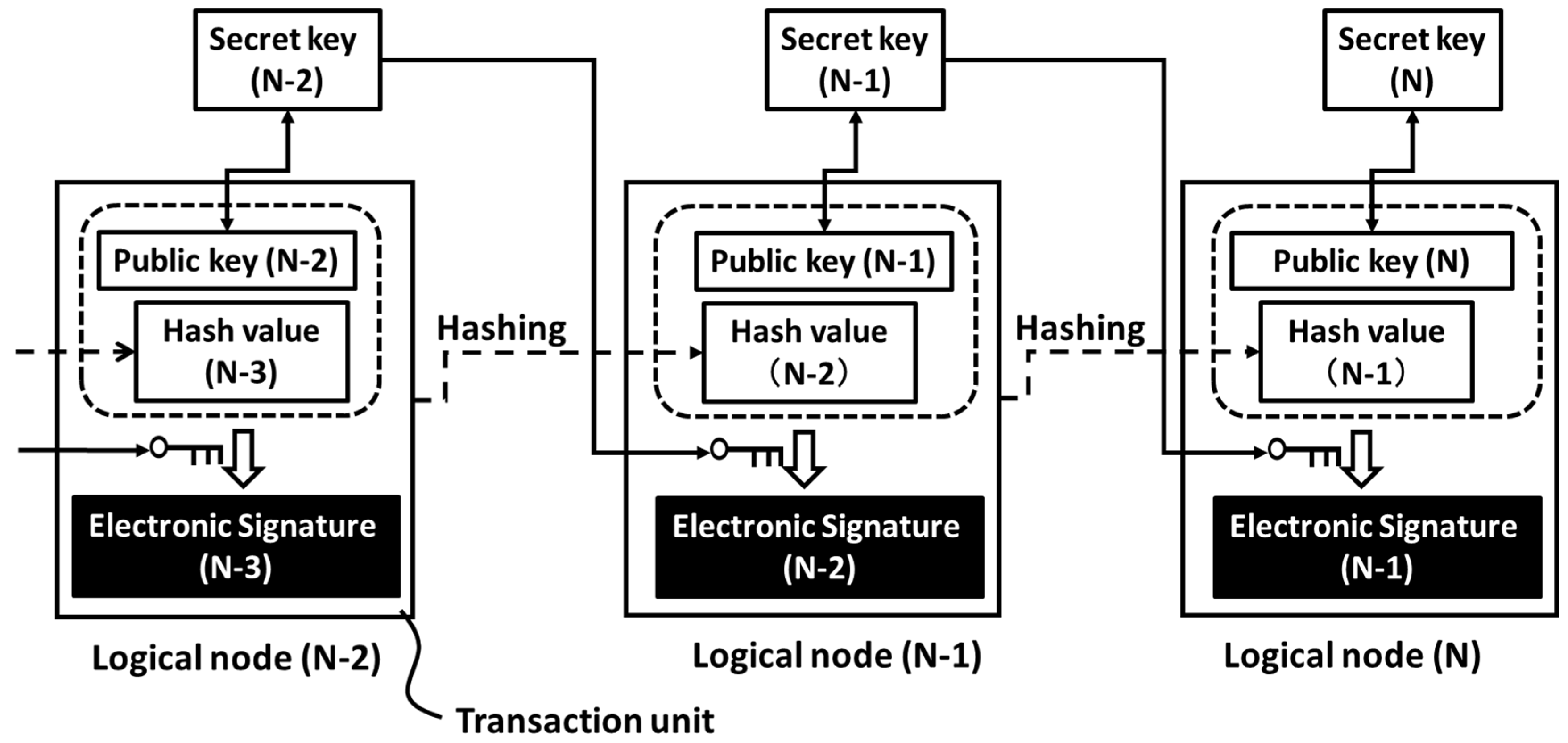
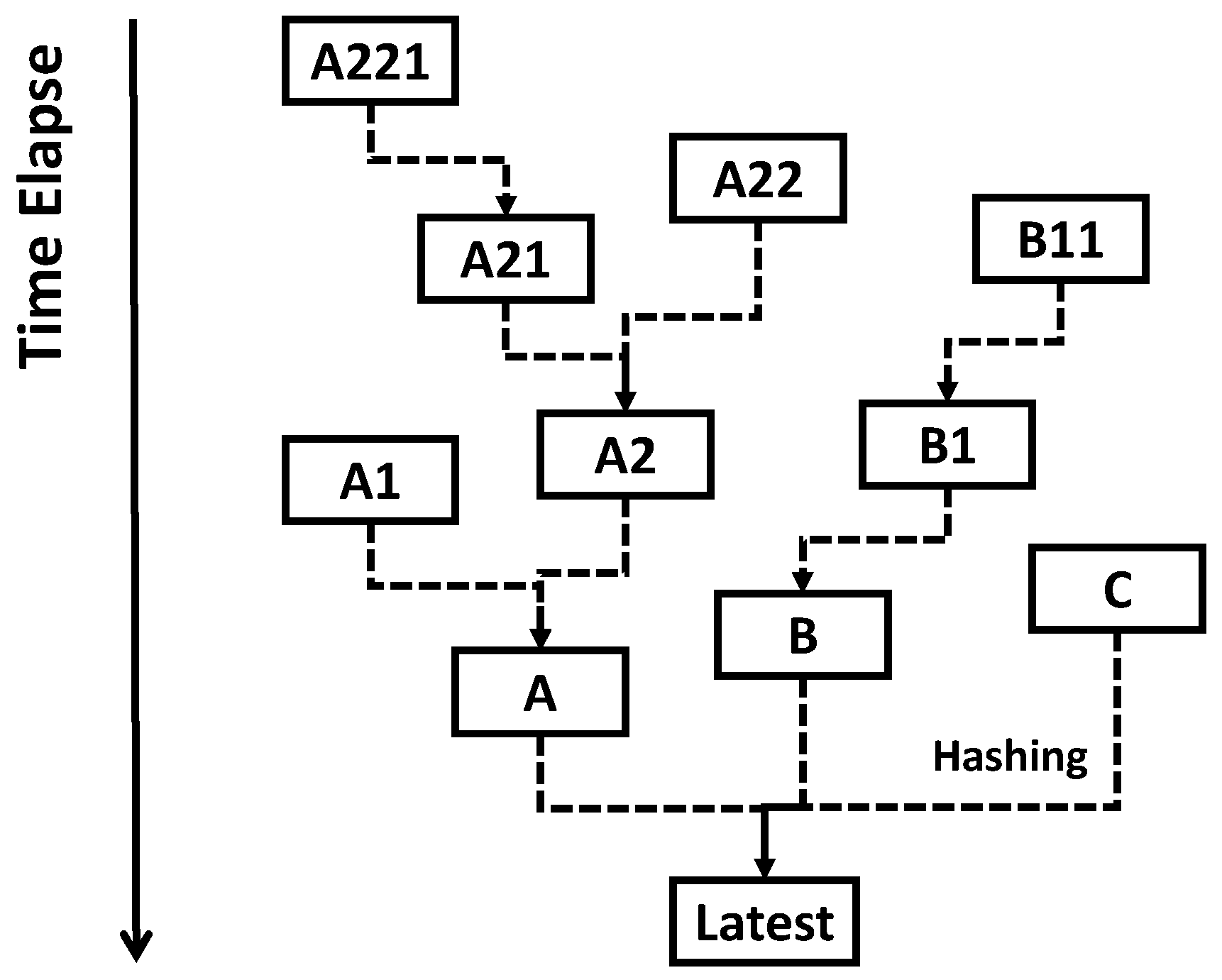

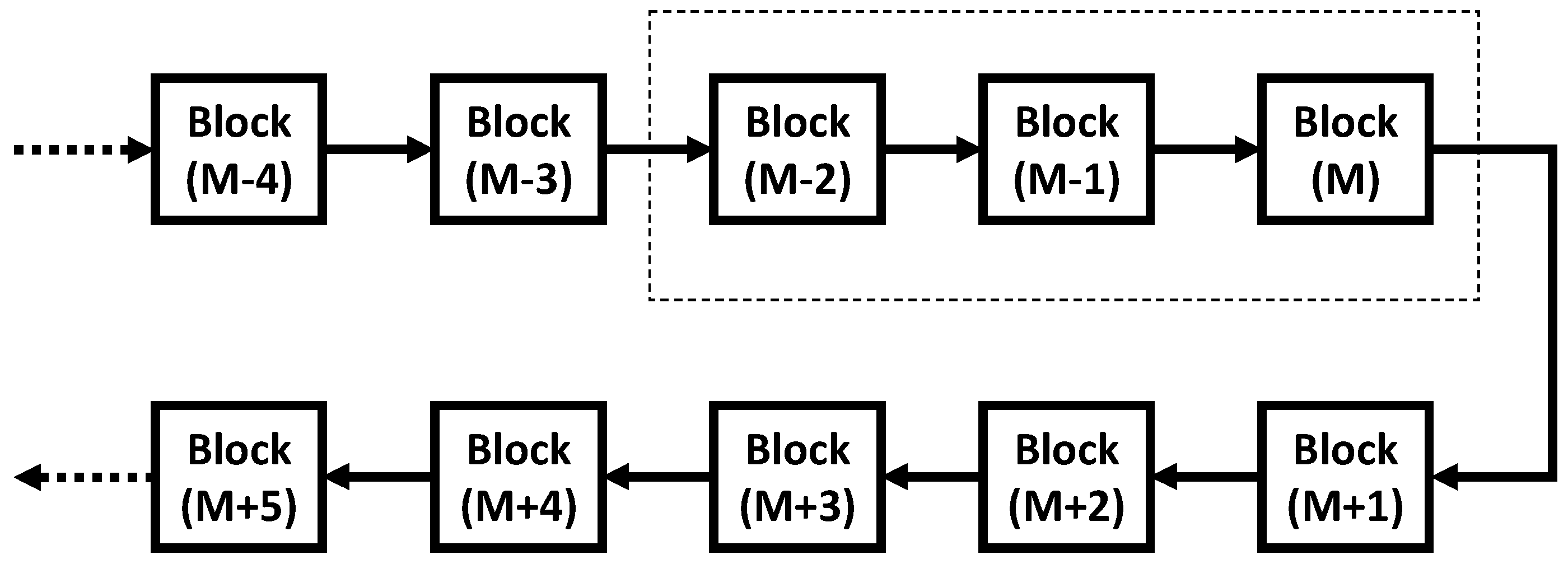

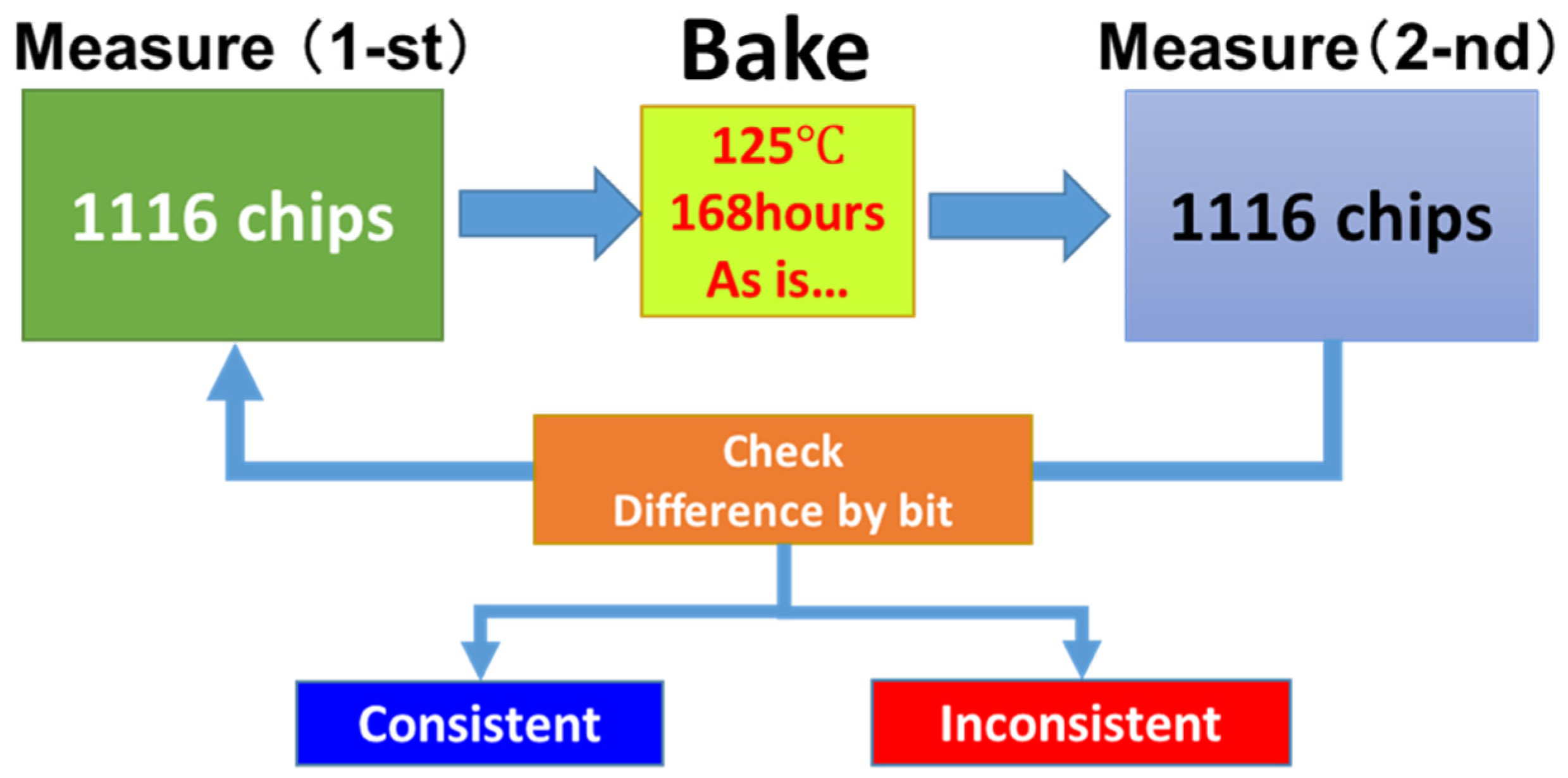

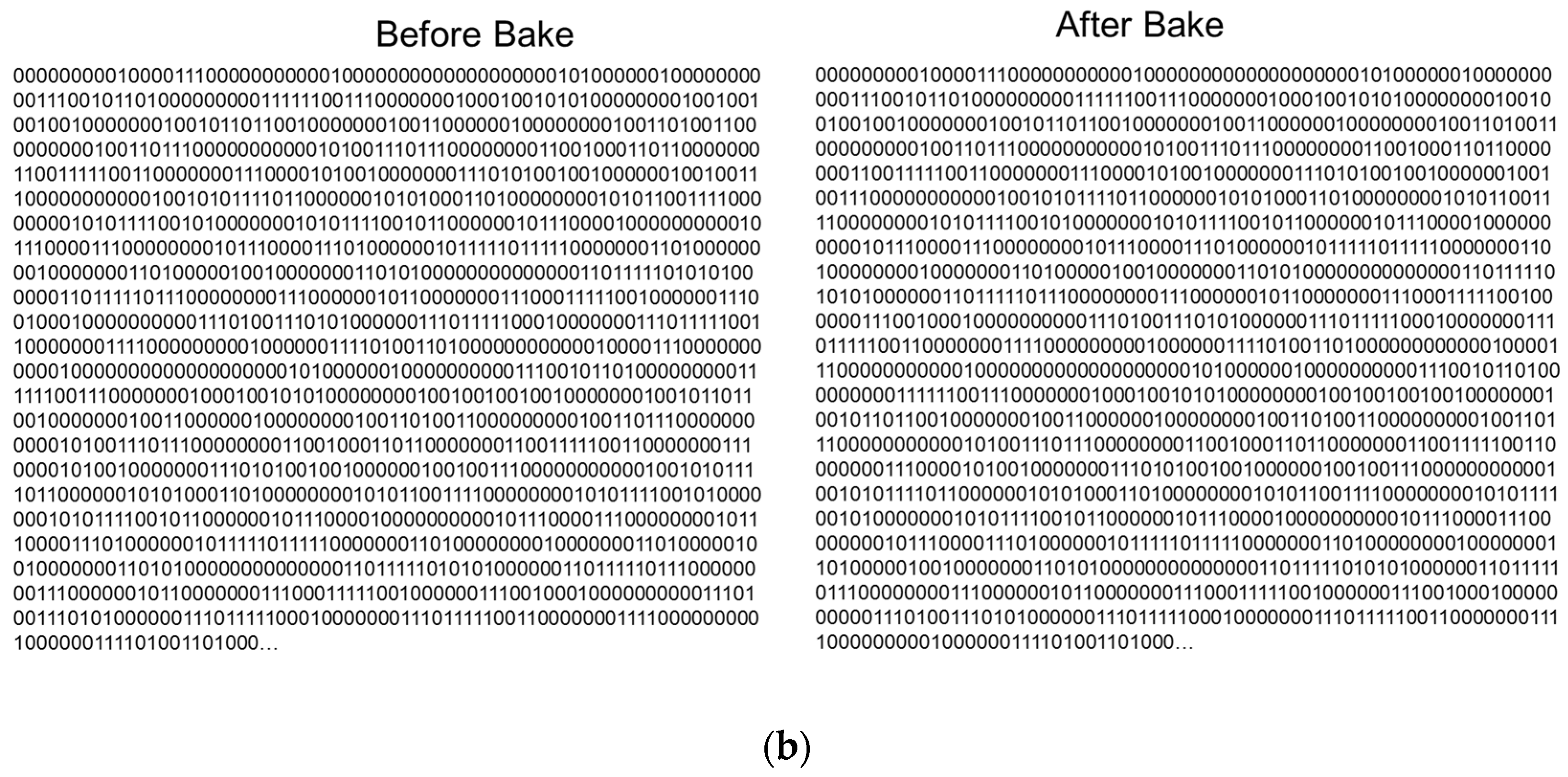
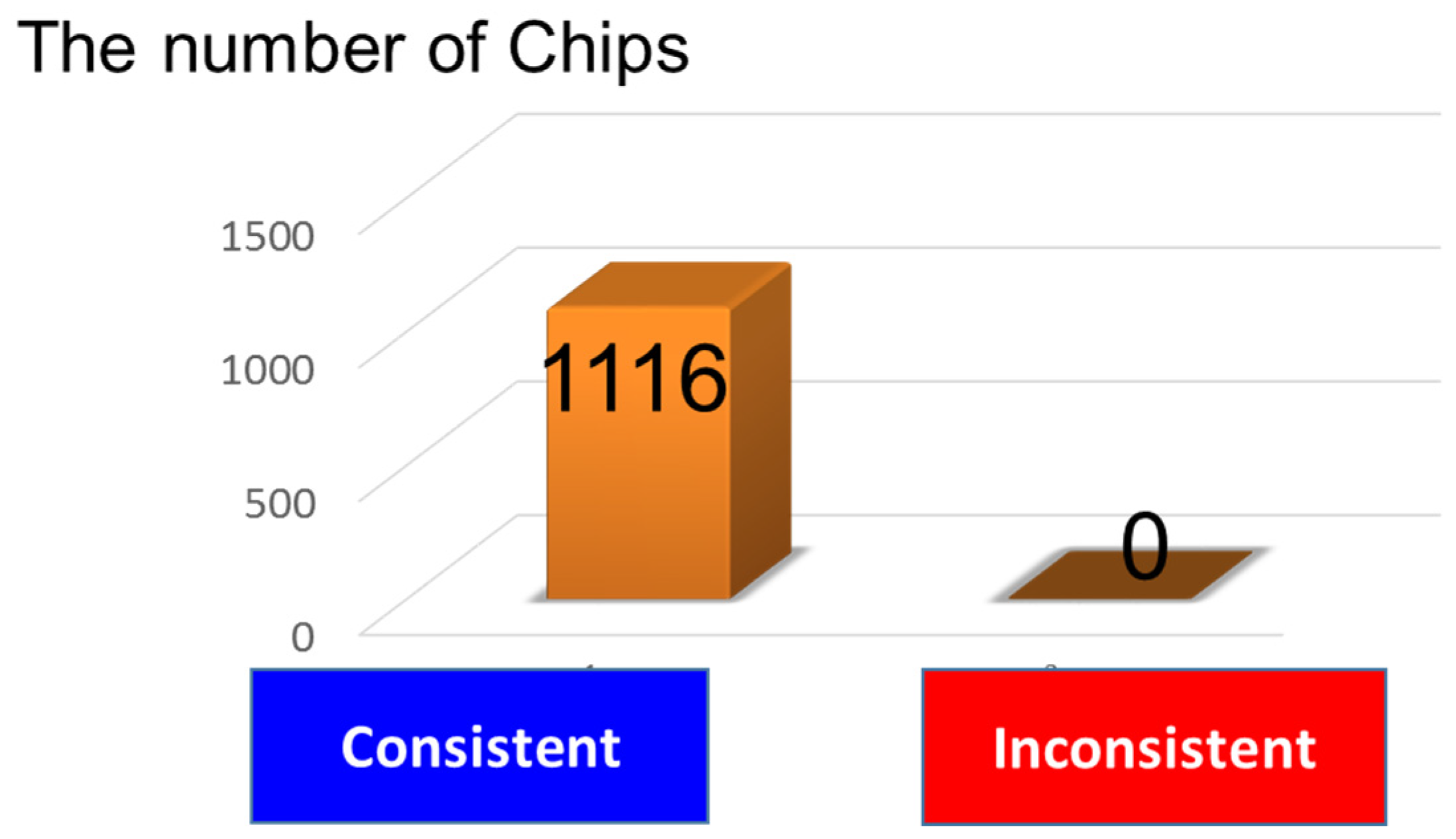
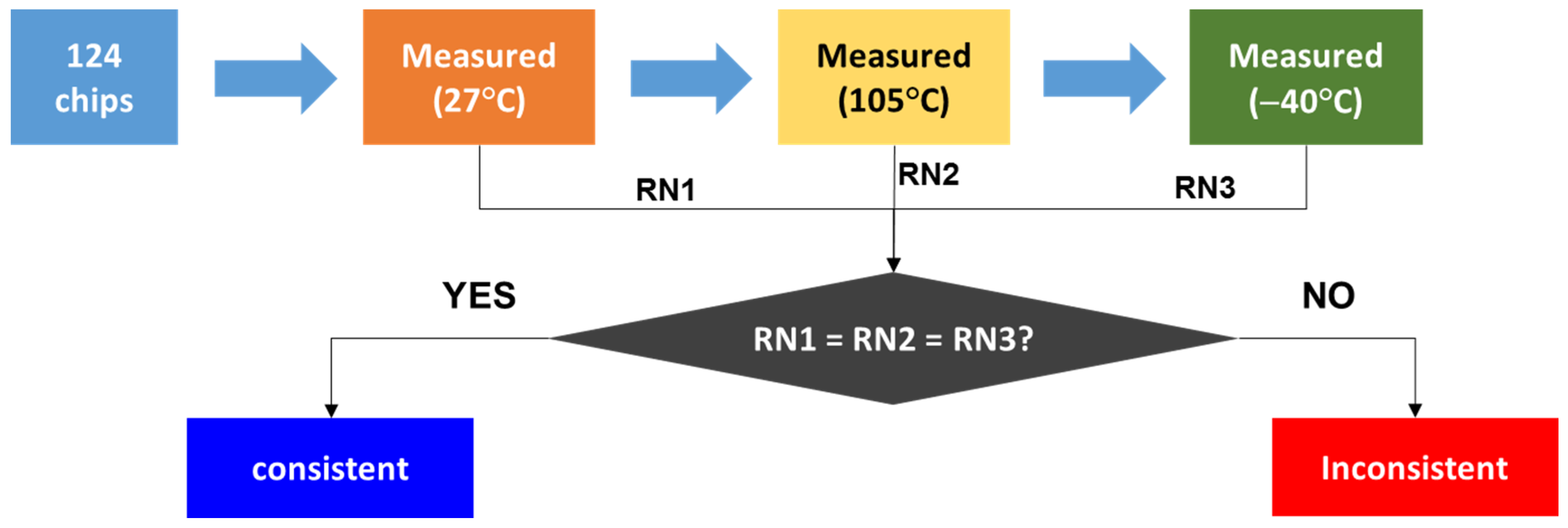

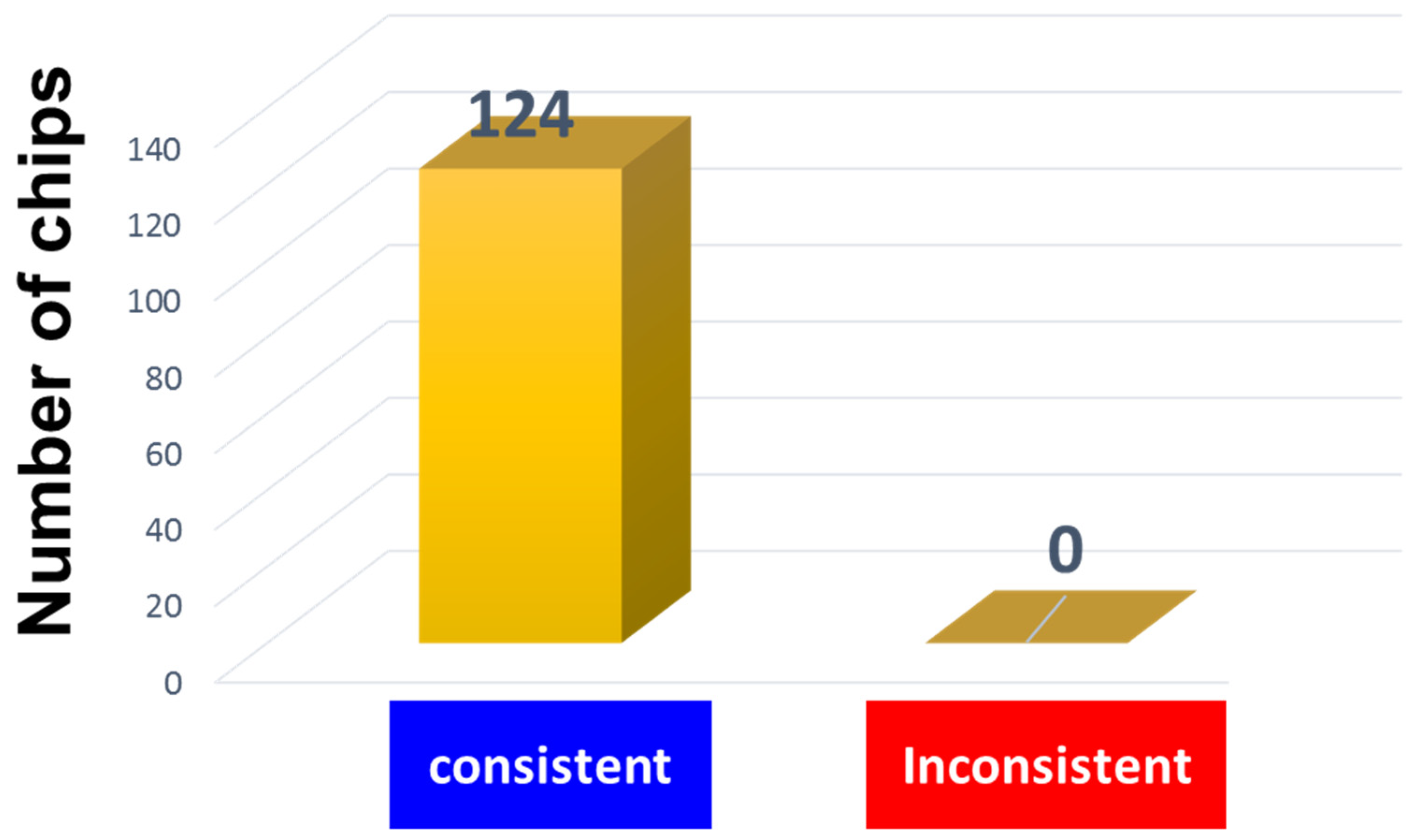
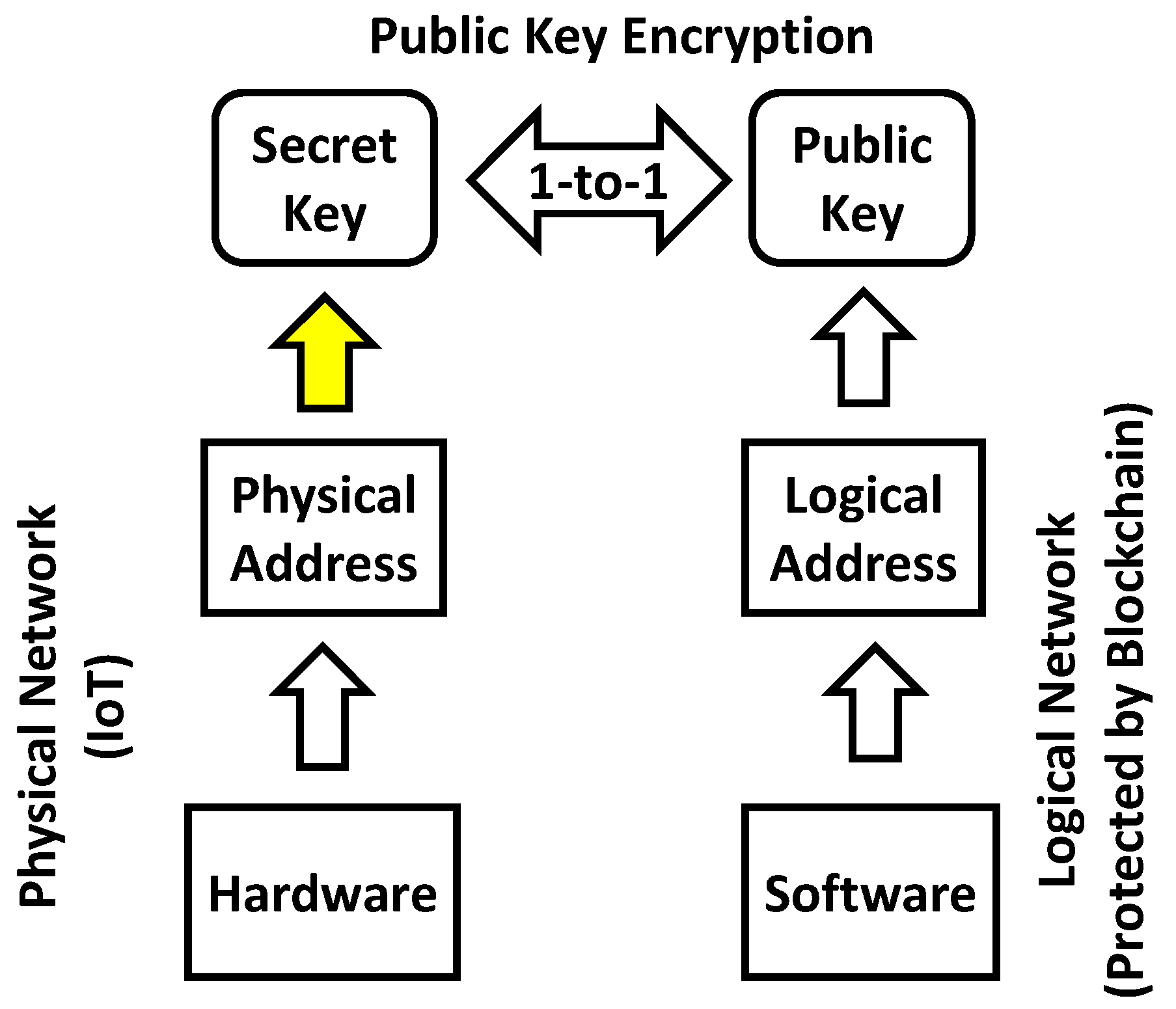
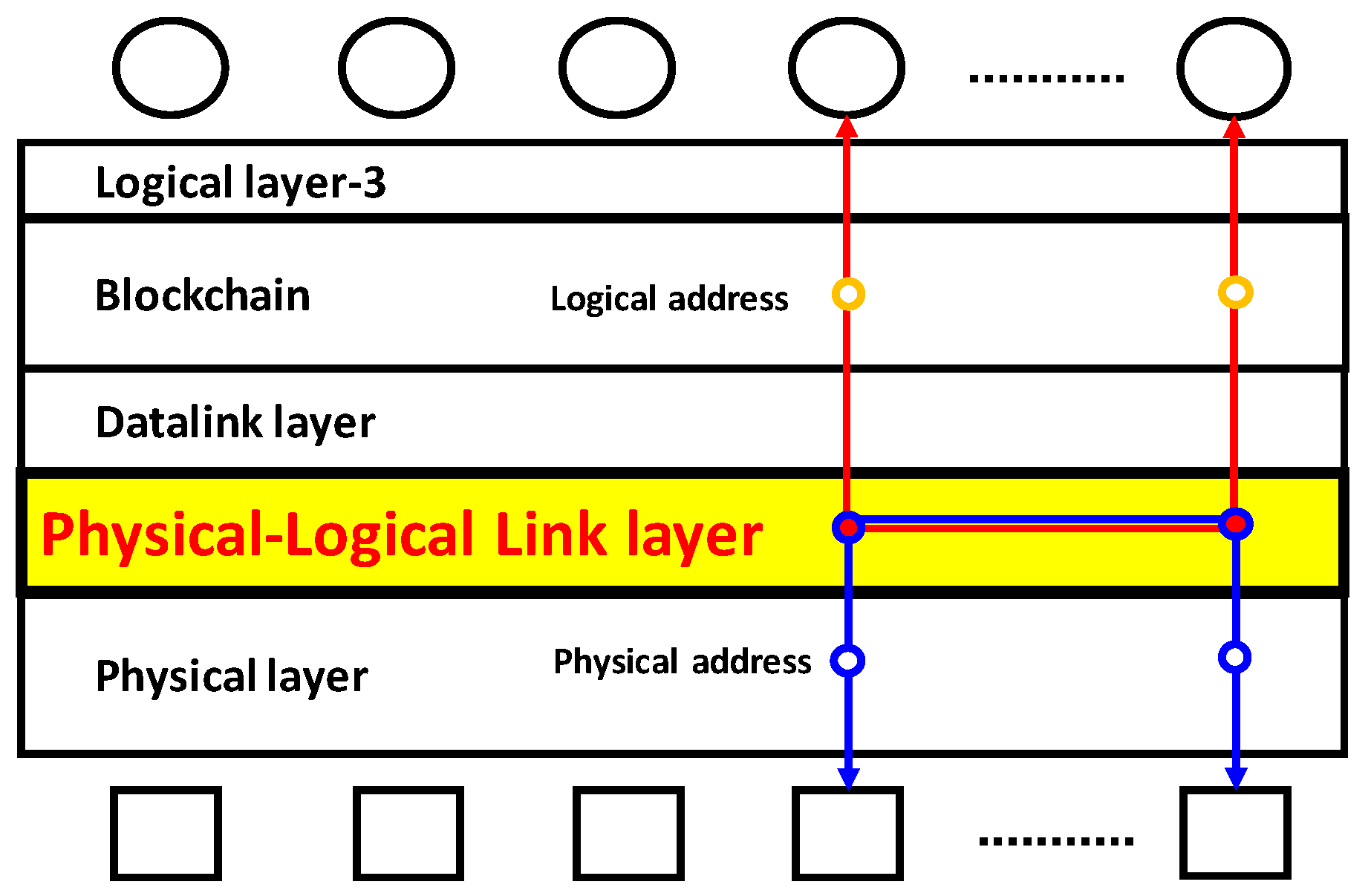


| Automotive | Industry | Consumer | |
|---|---|---|---|
| Longevity | >10 years | 5 to 10 years | 1 to 3 years |
| Temperature | −40 to 150 °C | −40 to 85 °C | 0 to 70 °C |
| Humidity | 0–100% | High | Low |
| Failure Rate (ppm) | As low as possible | <100 | <300 |
© 2019 by the authors. Licensee MDPI, Basel, Switzerland. This article is an open access article distributed under the terms and conditions of the Creative Commons Attribution (CC BY) license (http://creativecommons.org/licenses/by/4.0/).
Share and Cite
Watanabe, H.; Fan, H. A Novel Chip-Level Blockchain Security Solution for the Internet of Things Networks. Technologies 2019, 7, 28. https://doi.org/10.3390/technologies7010028
Watanabe H, Fan H. A Novel Chip-Level Blockchain Security Solution for the Internet of Things Networks. Technologies. 2019; 7(1):28. https://doi.org/10.3390/technologies7010028
Chicago/Turabian StyleWatanabe, Hiroshi, and Howie Fan. 2019. "A Novel Chip-Level Blockchain Security Solution for the Internet of Things Networks" Technologies 7, no. 1: 28. https://doi.org/10.3390/technologies7010028
APA StyleWatanabe, H., & Fan, H. (2019). A Novel Chip-Level Blockchain Security Solution for the Internet of Things Networks. Technologies, 7(1), 28. https://doi.org/10.3390/technologies7010028





